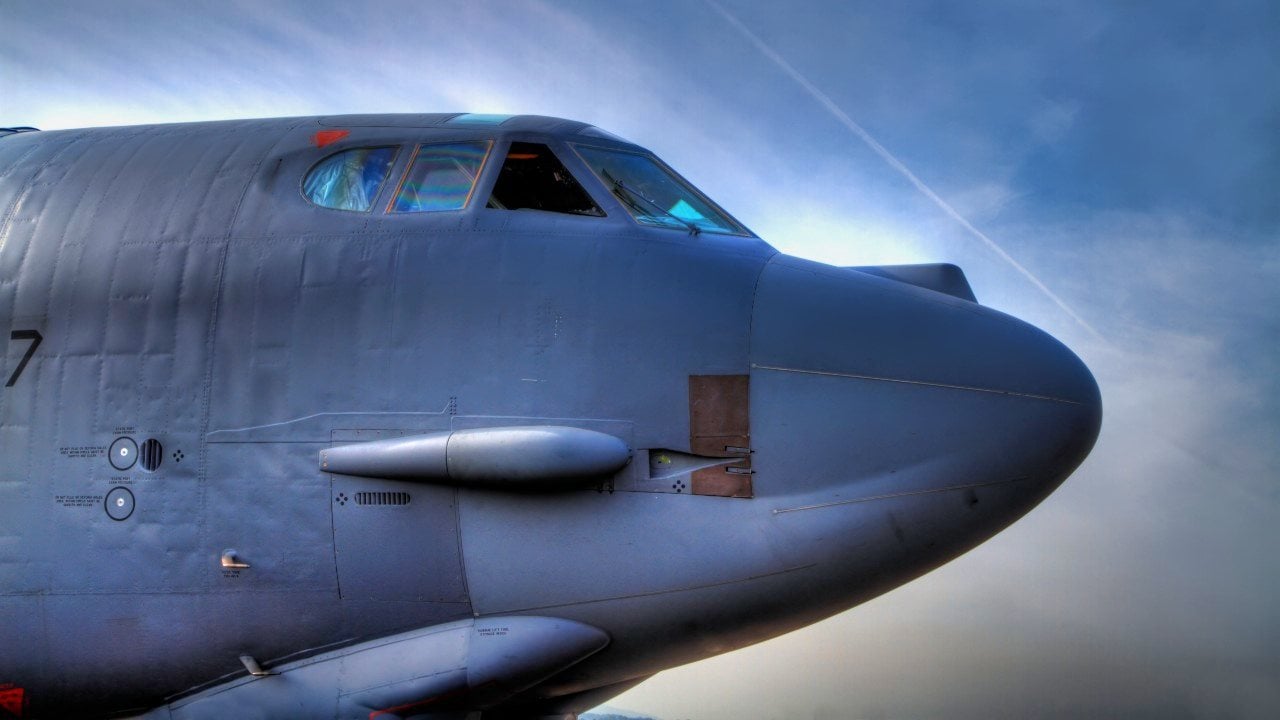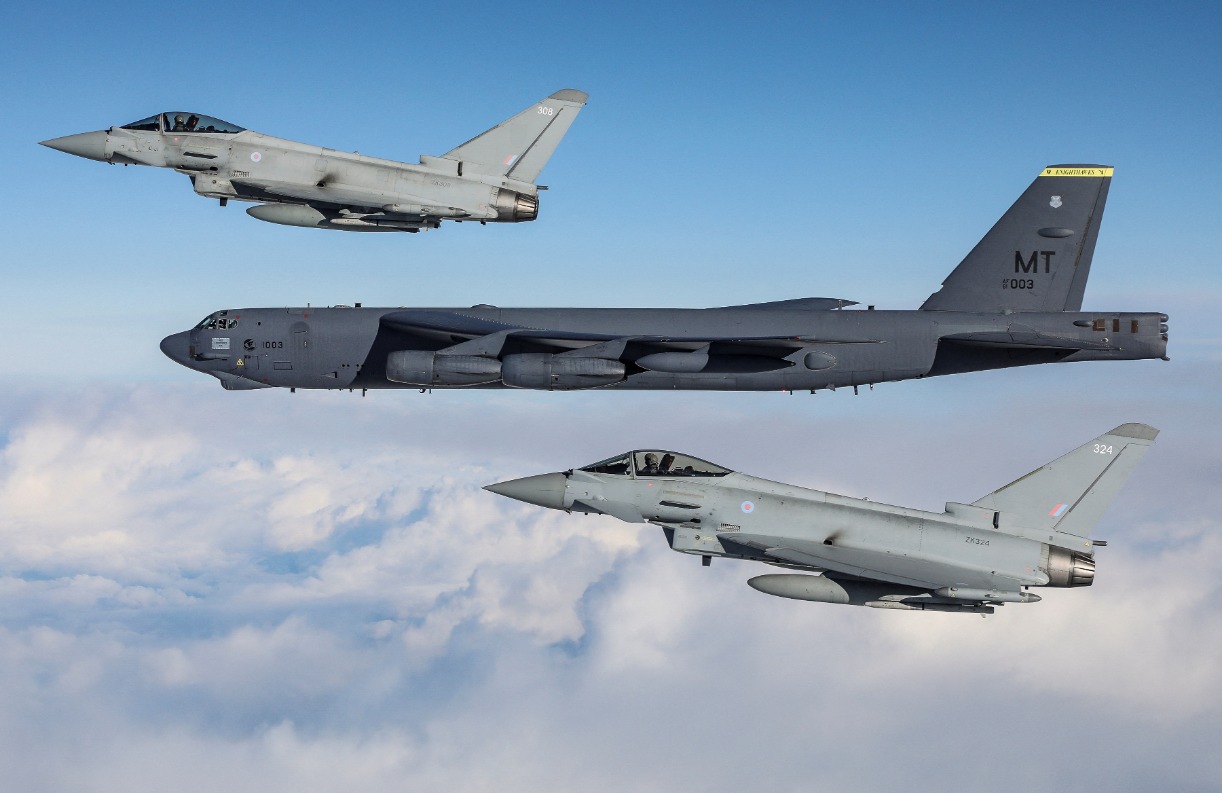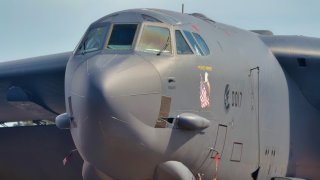U.S. Air Force's 'New' B-52J Bomber Won't Hit 'Initial Capability' for 9 More Years
The U.S. Air Force's B-52 Stratofortress, in service since the 1950s, is undergoing major upgrades, including the replacement of its aging engines with Rolls-Royce F130s. This effort, part of the B-52 Commercial Engine Replacement Program (CERP), is expected to take until 2033.
What You Need to Know: The U.S. Air Force's B-52 Stratofortress, in service since the 1950s, is undergoing major upgrades, including the replacement of its aging engines with Rolls-Royce F130s. This effort, part of the B-52 Commercial Engine Replacement Program (CERP), is expected to take until 2033.

-Additionally, upgrades to radar, cockpit systems, and crew reduction are planned, aiming to keep the B-52 operational into the 2050s. However, delays and underfunding have pushed back the timeline, highlighting broader concerns about the Department of Defense's ability to field systems quickly.
-The program's cost overruns have also contributed to the extended timeline.
Delays Push B-52 Engine Upgrades to 2033: What’s Holding It Back?
The United States Air Force's B-52 Stratofortress will remain the workhorse of the bomber fleet for years, and possibly even decades to come. The long-range strategic bomber entered service in the 1950s and is on track to see a service life that spans a century thanks to numerous upgrades and improvements.
However, the current updates – which are significant enough to warrant a designation change from B-52H to B-52J – may not be completed until 2033, a government watchdog has warned.
"The Air Force's B-52 Commercial Engine Replacement Program (B-52 CERP) delivered a virtual prototype in August 2023 before the program transitioned to the MCA pathway prior to development start, after which it plans to spend an additional 9 years developing and testing physical protypes [sic]. The program does not anticipate delivering initial capability until mid-fiscal year 2033, almost 15 years after its MTA initiation," the Government Accountability Office (GAO) stated in its Report to Congressional Committees: Weapons Systems Annual Assessment released last month.
The subhead of the report summed up a worrisome trend that goes far beyond the B-52 program: "DOD Is Not Yet Well-Position to Field Systems With Speed."
Background – The Engine Upgrade
As previously reported, the B-52 will remain in service at least until the late 2040s or early 2050s – and given the capabilities and significant investment being made, the venerable bombers could fly even longer.
Each B-52 is powered by eight engines in four pods. Its aging Pratt & Whitney TF-33 engines are being replaced by the Rolls Royce F130 that were derived from the Rolls-Royce BR family of commercial engines that are used in a variety of aircraft around the world. The engines have been employed in more than 30 million hours of operation, and in addition to their high reliability rate, the F130 is noted for its fuel-efficient design.
\More than 600 engines are expected to be delivered to the United States Air Force, and those powerplants will keep the bomber flying for years to come. The new engines will be produced by Rolls-Royce North America at its facility in Indianapolis, Indiana.
What is also notable is that Boeing, maker of the B-52 has explored replacing the original Pratt & Whitney TF-33 engines since the 1970s. The Air Force rejected the idea, arguing that replacing the engines would cost more than keeping the existing ones. However, the service finally changed course, due in part to the fact that Air Force officials had failed to take into account the increase in fuel costs.

In September 2021 Rolls-Royce was awarded the $2.6 billion CERP contract to finally replace the aging engines.
Not An Easy Upgrade for B-52J
Swapping the engines is probably as hard as it sounds, and maybe even more so – as it required some retooling of the aging bombers.
Boeing and Rolls-Royce utilized state-of-the-art digital engineering tools to determine how to best incorporate the engines in the old warbirds. Rolls-Royce created digital maps of the massive bombers, which allowed engineers to map models of the new engines to conclude how these would interact with other components and systems. It further involved the two companies trading digital models to aid engineers, who could ensure that the F130 would fit precisely inside the B-52 nacelles while also determining where newly added components could be placed.
Beyond the new engines, the B-52 CERP has called for the replacement of associated subsystems, including the engine struts, electrical power generation system, and cockpit displays for the B-52H fleet.
New Radar and Reduced Crew Size
Other changes are coming to the B-52 that will include the installation of Raytheon's AESA AN/APG-79 radar as part of the addition of new navigation and communication systems.
Last month, L3Harris Technologies was awarded a $34 million contract to modernize the cockpit as part of the U.S. Air Force's Global Strike Command B-52 Quad Crew Program. That initiative will consolidate the functions of the electronic warfare officer and navigator into a single position.
Currently, the B-52 is operated by a five-person crew that includes two pilots, two navigators, and an electronic warfare officer. The upgrade will relocate the control and display unit panels to the navigator station, reducing the crew to just four.
Another effort led by the Crew Station Working Group is conducting a series of analyses that will look at the B-52's weight and balance, structural and electrical load analysis, and thermal cooling. It will be used to identify any impact on the B-52 airframe and inform the modification kit design.
Costs Are Part of the Delays
According to the GAO report, program officials said that the delays to critical design are "a result of underestimating the level of funding needed to complete the detailed design activities. Specifically, as the B52 prototyping effort was extended from preliminary design to critical design, program officials received a proposal for the detailed design work."
Program officials warned that "proposal cost exceeded the program's available funding," and that Boeing was told to slow the work to "align with available funding."
Due to the magnitude of the work on the B-52 bombers, and the fact that it clearly wasn't made a priority, it could now be nearly a decade until it is completed.
Author Experience and Expertise: Peter Suciu
Peter Suciu is a Michigan-based writer. He has contributed to more than four dozen magazines, newspapers, and websites with over 3,200 published pieces over a twenty-year career in journalism. He regularly writes about military hardware, firearms history, cybersecurity, politics, and international affairs. Peter is also a Contributing Writer for Forbes and Clearance Jobs. You can follow him on Twitter: @PeterSuciu. You can email the author: [email protected].
Image Credit: Creative Commons.


